Imagine starting your day with the aroma of freshly ground coffee beans wafting through your home. This tantalizing scent doesn't just promise a regular cup of coffee; it promises a perfect, home-brewed espresso.
It's the kind of coffee that not only wakes you up but also invites you to savor its flavor, appreciate its richness, and enjoy a moment of tranquility before your day begins in earnest.

You know that making the ideal espresso requires more than a single push of a button. Producing that consistent, dreamlike shot involves carefully selecting the appropriate beans, using the right equipment, and fine-tuning the grind size.
While this journey might seem a difficult chore, don't worry! This article will make everything clear and simple. We'll guide you through each step while offering helpful advice and information. With this guide, you'll soon be brewing barista-quality espresso in your kitchen.
Are you ready to step up your coffee game? Let's get started!
Selecting the Right Beans
The first and possibly most crucial step in creating a good espresso is choosing the right coffee beans. The method used to choose coffee beans can significantly impact your espresso's flavor, aroma, and overall quality.
Remember that different brewing methods might require different beans and roasts when selecting beans. For instance, French press coffee, another favorite brewing method among coffee aficionados, can be more forgiving with the beans' roast profile and allows for a broader range of suitable flavors.
But, with so many varieties and blends to choose from, how can you know which one works best for you? Let's delve deeper.
Type of Beans
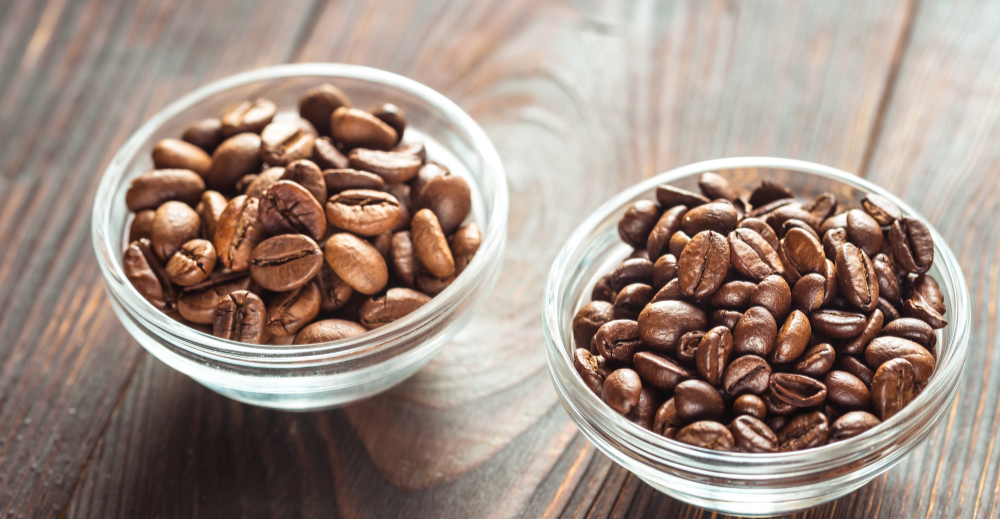
It's important to distinguish between coffee beans suited for espresso and those for other types of coffee. Espresso beans blend Arabica and Robusta varieties, curated to offer a balanced flavor profile.
This balance can provide the complex blend of bitterness, acidity, sweetness, and robust caffeine kick that defines an excellent espresso. Espresso beans undergo a dark roast to give them that rich, bold flavor that stands up to the intense pressure and heat of espresso brewing.
Roast Level
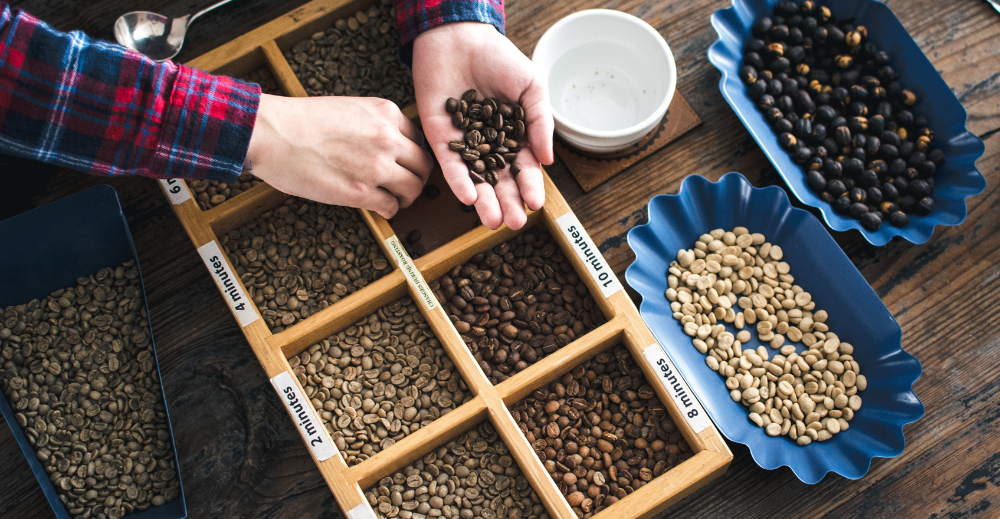
The roast level substantially influences your coffee's flavor. Espresso frequently uses dark roast beans because of their rich flavor and low acidity. They provide a stronger, bolder, and more powerful flavor and can withstand the intensity of the espresso brewing process.
For those looking for a more complex flavor, medium roast beans can offer a balanced flavor profile with an added hint of acidity.
Freshness
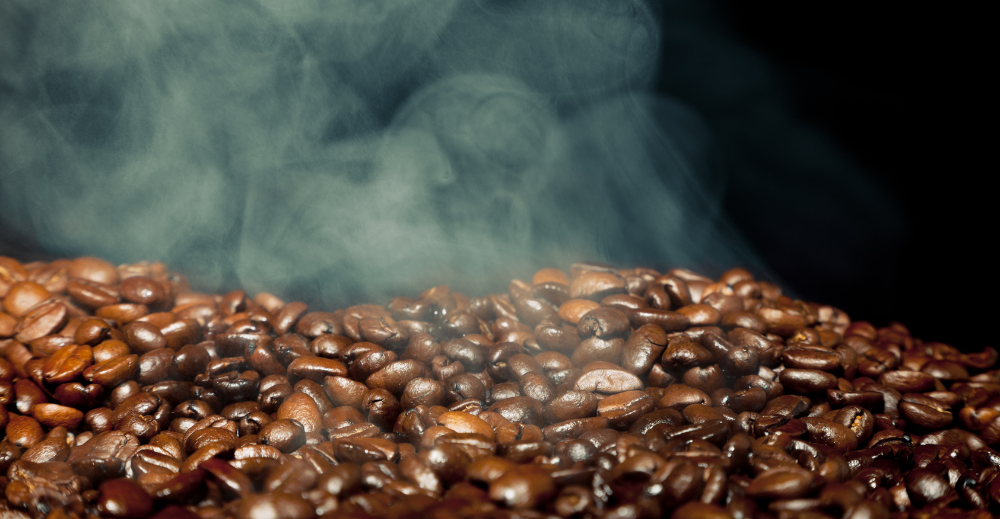
Choosing coffee beans requires careful consideration of freshness. Remember that your espresso will taste better if the beans are fresher.
Like any other foodstuff, coffee beans have a prime period where their flavor is at its peak. This is usually within a month of being roasted. Beyond this period, the beans lose their flavor and aroma, affecting the quality of your espresso. Therefore, always check the roast date on the package and opt for the freshest beans.
Origin
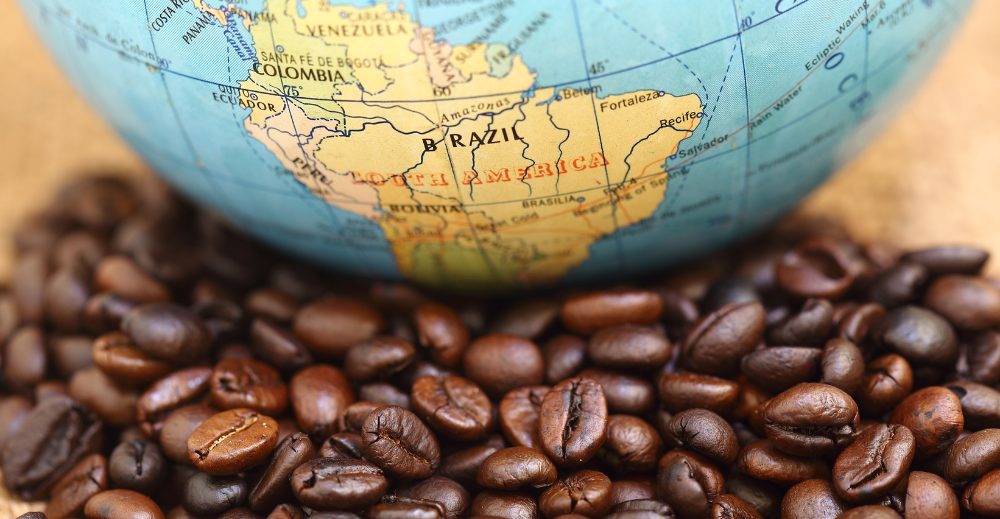
Because of the variable climate, soil, and altitude of the growing regions, the origin of the coffee bean might affect its flavor. Beans from various areas have distinctive flavor characteristics. For instance, beans from Latin America are known for having a mild, fruity flavor, whereas beans from Africa may have a bright, floral flavor.
Choosing the Right Equipment
The quest for the perfect home-brewed espresso requires the right beans and equipment. Both components are essential and must be considered.
The right beans are essential because they set the tone for your espresso's flavor, aroma, and quality. Even the best brewing equipment cannot compensate for stale or low-quality beans.
The nuances in taste, body, and acidity that characterize a perfect espresso begin with the selection of high-quality, freshly roasted coffee beans suitable for brewing. The quality of your espresso is only as good as the beans you start with.
Having the right beans, though, is only half the challenge. You cannot fully extract the potential of coffee beans without the proper equipment.
Here's what you need:
Espresso Machine
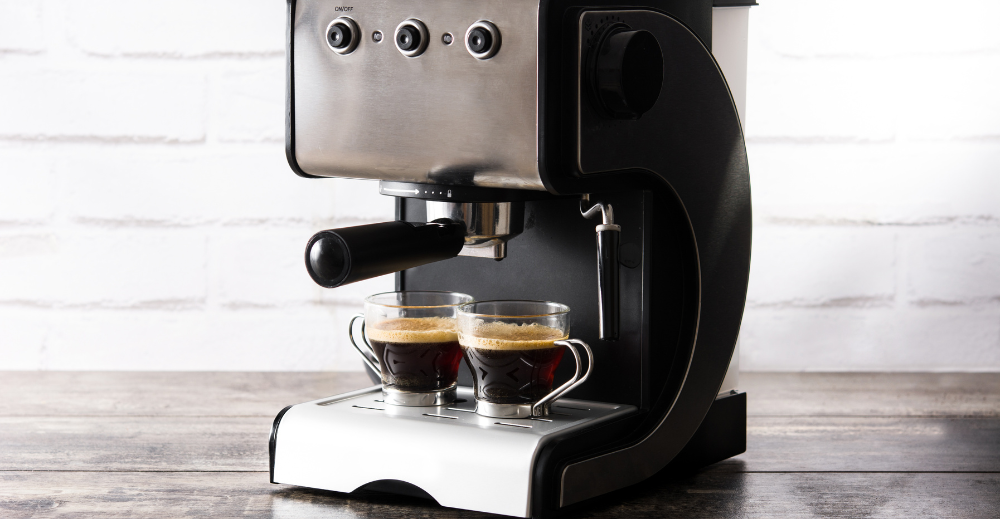
Commercial espresso machines are the gold standard for brewing, but they can be costly and take up a lot of space. Fortunately, home espresso machines are available that provide control over brewing variables such as water temperature and pressure at a lower cost.
A good quality machine is the cornerstone of your home espresso brewing setup. It applies high pressure to force hot water through your ground coffee, extracting the full spectrum of flavors. Look for a machine that allows you to control temperature and pressure, as these parameters can affect the espresso's flavor. Also, ensure it has a steam wand if you make cappuccinos or lattes.
Coffee Grinders
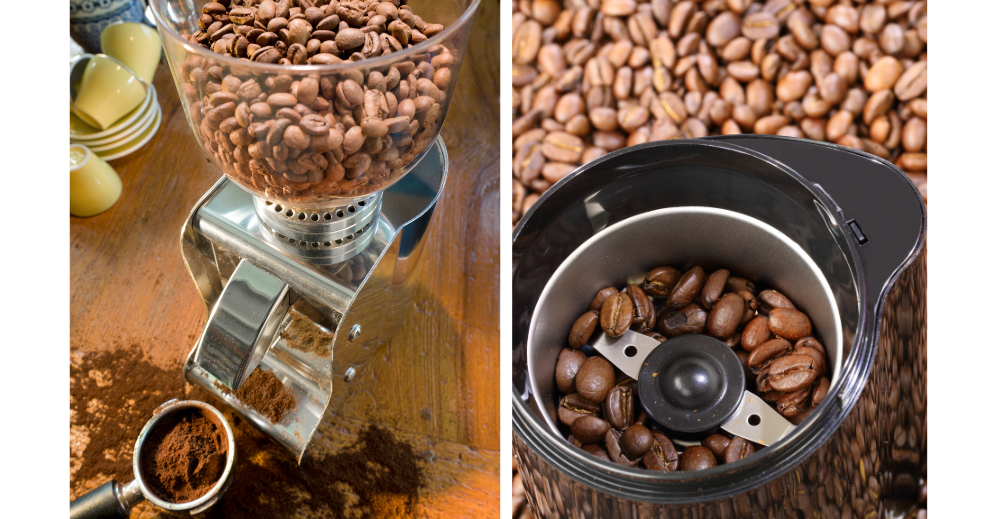
Coffee grinders might seem a secondary consideration, but it's crucial to your espresso's quality. Burr grinders are recognized as the best option for grinding coffee beans.
Unlike blade grinders, they grind beans to a consistent size, which is crucial for even extraction during brewing. Additionally, a burr grinder can fine-tune the grind size, allowing you to match it to your espresso machine's requirements and your personal taste.
Coffee Scale
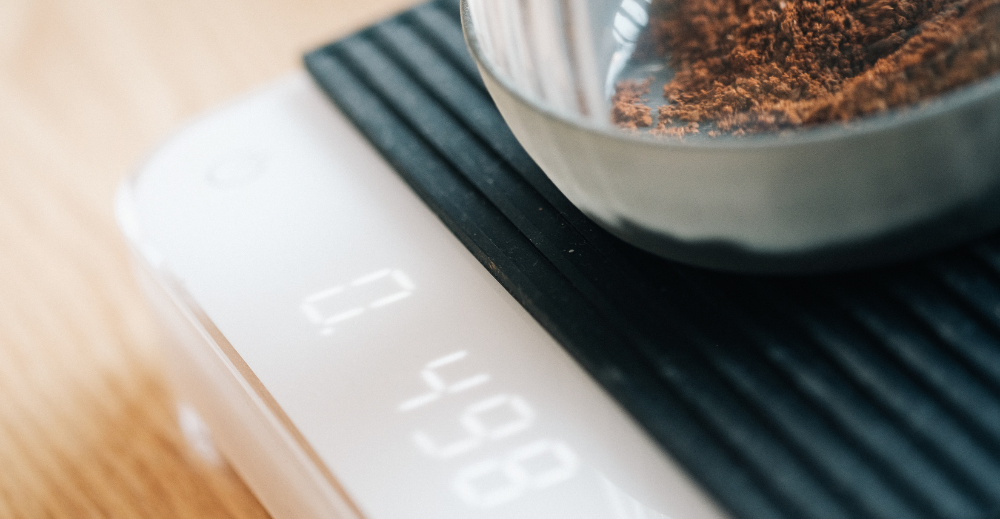
Precision is vital when brewing espresso, and a coffee scale helps ensure you always use the right amount of coffee. This will ensure consistent results and help you fine-tune your brewing recipe.
Tamper
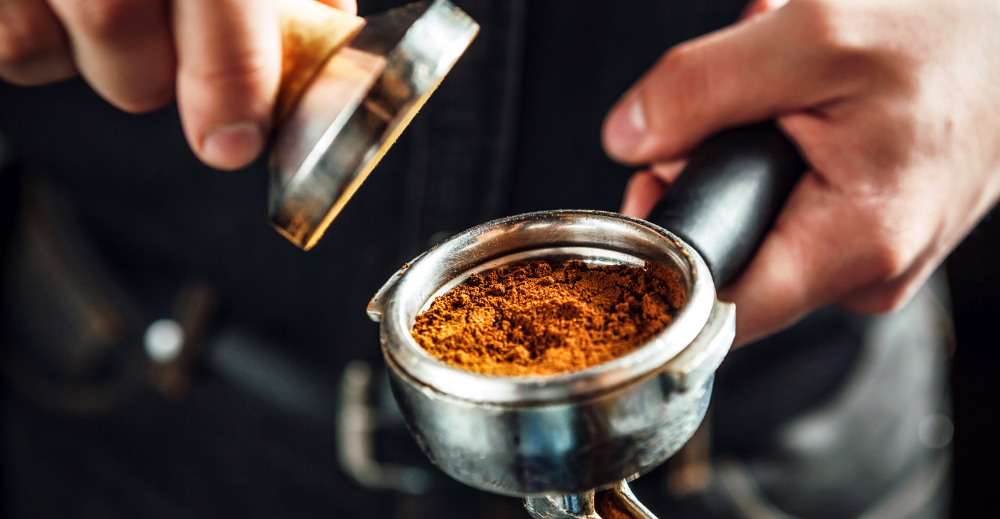
A tamper presses down the ground coffee in the espresso machine's portafilter. This step is crucial as it ensures even extraction by making the coffee bed flat and compact, preventing water from finding easy channels through the coffee.
Frothing Pitcher

A frothing pitcher is a must if you fancy milk-based espresso drinks like lattes and cappuccinos. This container uses the espresso machine's steam wand to froth milk to the right consistency.
Adjusting the Grind Size and Achieving Consistency
Achieving the perfect grind size at home can be tricky, as it requires a good quality coffee grinder, preferably a burr grinder, and some level of experimentation.
You might have to adjust the grind size based on your machine and the taste of your espresso, as the extraction time and flavor can be affected by the size of the coffee grounds. Let's examine this in more depth.
Why Grind Size Matters
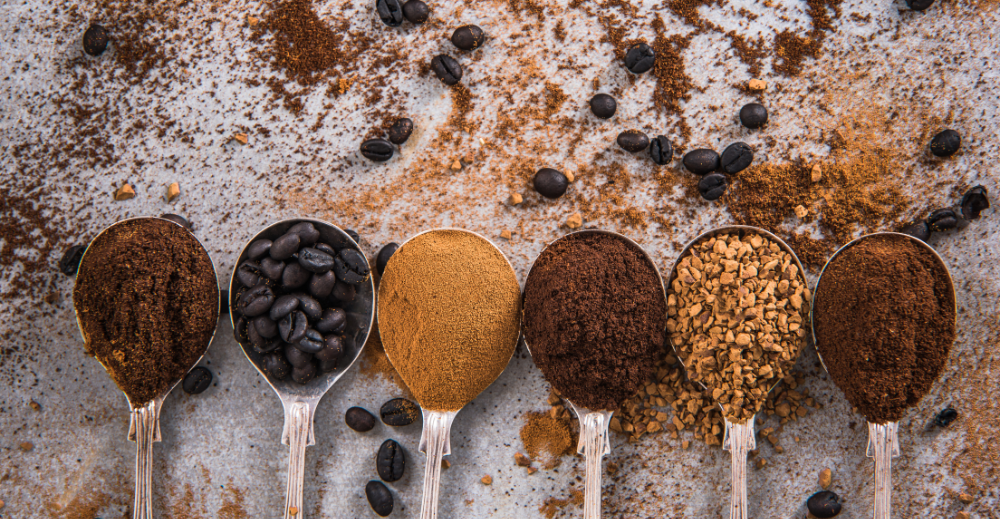
Coffee grind size is usually categorized as coarse, medium-coarse, medium, medium-fine, fine, and extra fine. The ideal grind size for espresso falls in the fine to medium-fine category. For comparison, a medium grind is used for methods like drip coffee.
When hot water passes through the coffee grounds in your espresso maker, it extracts various compounds that contribute to the taste and aroma of the final brew.
If your grind is too coarse, the water will flow quickly, resulting in under-extraction. This often leads to a sour, weak, and underwhelming espresso. If your grind is too fine, the water will struggle to pass through, resulting in over-extraction and a bitter, overly intense espresso.
The Ideal Grind Size for Espresso
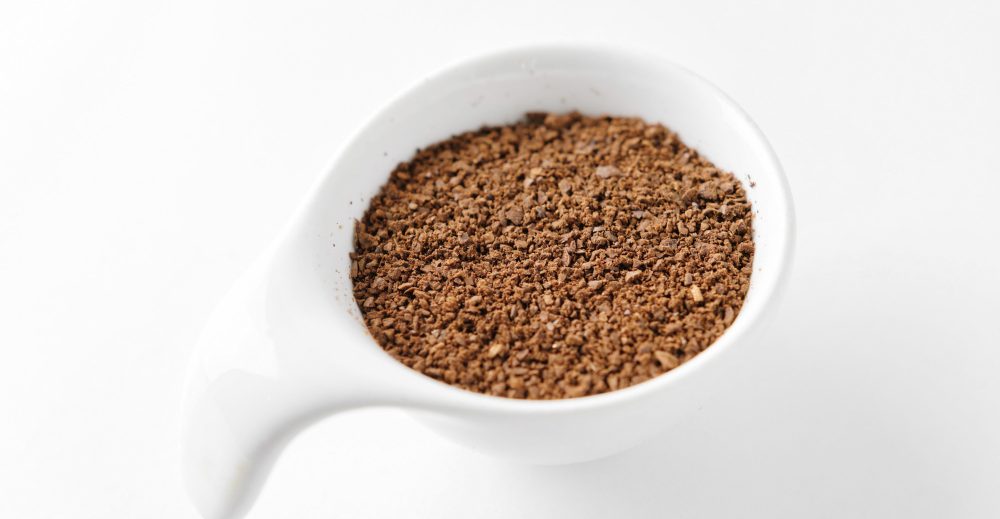
The perfect grind size for espresso is fine but not as powdery as powdered sugar. It should feel slightly gritty when rubbed between your fingers. But the exact size may vary based on your machine and personal taste. This is where the adjustability of a good burr grinder becomes invaluable.
Achieving Grind Consistency
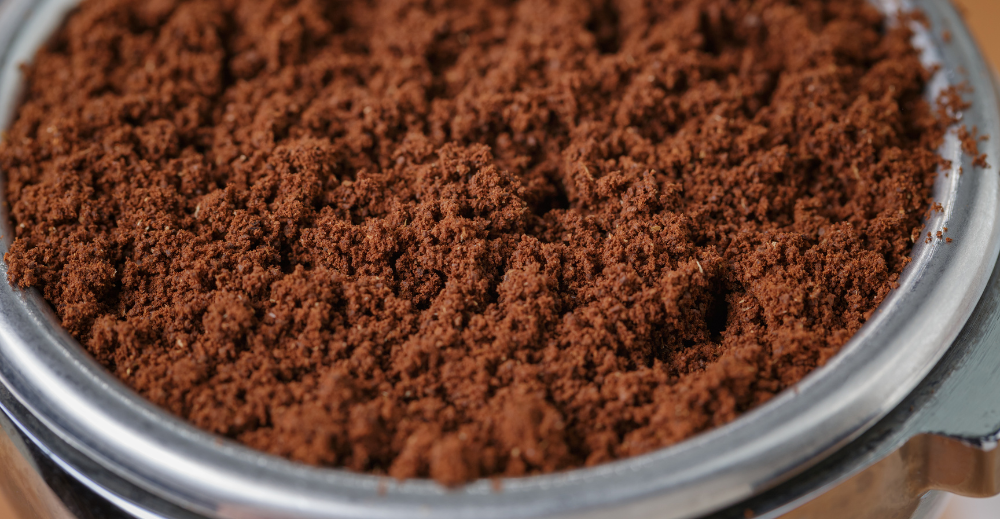
Consistency is as important as the size of the grind coffee beans. If your coffee grounds vary in size, the water will extract unevenly, leading to a muddled and imbalanced espresso.
Burr grinders, instead of blade grinders, excel in delivering a consistent espresso grind. They crush the beans between two rotating burrs, providing uniform coffee grounds.
Adjusting Your Grinder and Testing
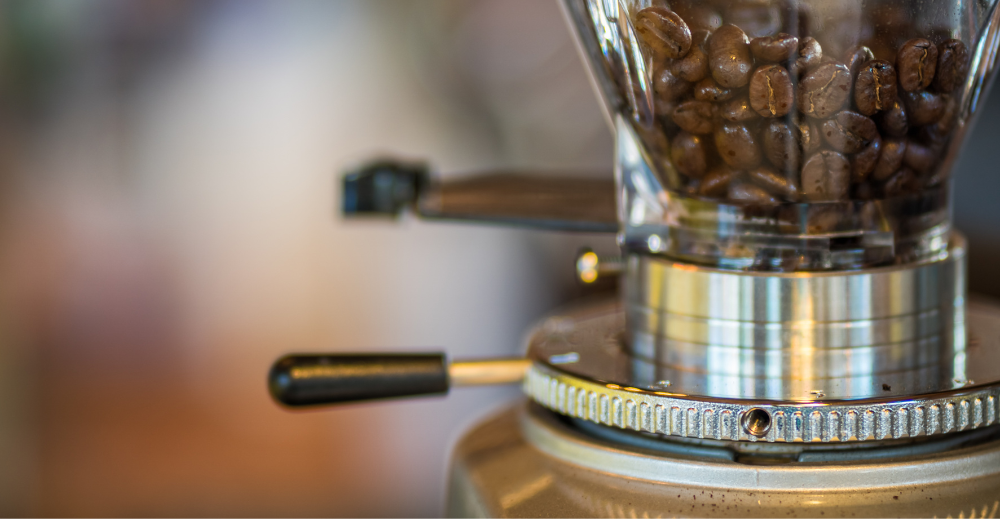
Burr grinders often come with multiple settings to adjust the grind size. Start with a setting for a fine to medium-fine grind and adapt based on the taste of your espresso. Brew an espresso with your chosen grind size, taste it, and make minor adjustments in the grind setting as necessary. Over time, you'll get a feel for the grind size that delivers the most balanced flavors you enjoy.
How to Get Great Espresso at Home: Tips and Tricks
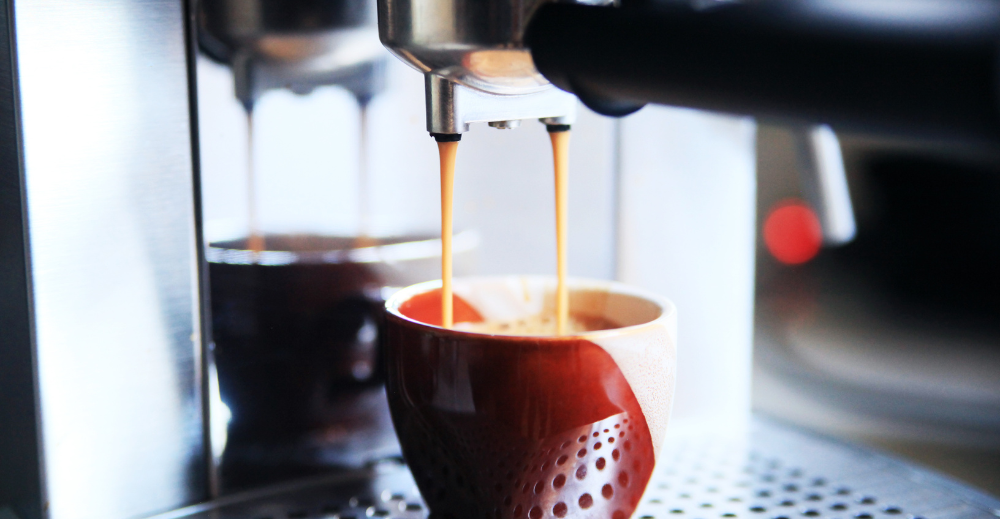
Many coffee enthusiasts share a common dream: to brew the perfect espresso shot at home. Yet, this can often feel like a difficult task to master. But you can turn this dream into reality with a solid understanding of the process, tools, and patience.
Here are some tips to help you achieve an excellent espresso at home:
-
Use Freshly Roasted Beans
The quality of your espresso begins with the coffee bean. Use beans roasted within the last two weeks to ensure maximum freshness and flavor. Older beans will result in a flat and dull espresso.
-
Invest in a Quality Grinder
The consistency and size of your coffee grounds affect the extraction process. Most burr grinders are known for providing a consistent grind and allowing you to control the grind size, which is crucial when brewing coffee.
-
Fine-Tune Your Coffee Bean Grind Size
The grind size for espresso should be fine but not too powdery. Your espresso will be weak and under-extracted if the grind is too coarse. If it's too fine, your espresso will be over-extracted and taste bitter. Experiment with different grind sizes to find the sweet spot for your taste.
-
Measure Your Coffee and Water
Consistency is critical when it comes to coffee brewing methods. Use the same amount of coffee grounds and water each time. The standard ratio is 1:2 (coffee to water), but feel free to tweak this to your liking.
-
Master Your Espresso Machine
Understanding how your machine works and how to use it is crucial. Make sure to preheat your machine, maintain it, and know how to adjust the settings to get the best results.
-
Pay Attention to Extraction Time
The ideal extraction time for a shot of espresso is between 20-30 seconds. If your shot pulls too quickly, your grind might be too coarse. If it takes too long, your grind might be too fine.
-
Clean Your Equipment Regularly
Coffee residue can build up over time and affect the taste of your espresso. Make it a habit to clean your equipment to ensure they're always in the best condition.
-
Practice and Experiment
Don't be discouraged if your first few espresso shots are imperfect. Brewing and grinding espresso at home require practice and experimentation. Over time, you'll develop a feel for it and be able to produce a great espresso shot.
A Step-by-Step Guide to Grinding Coffee Beans
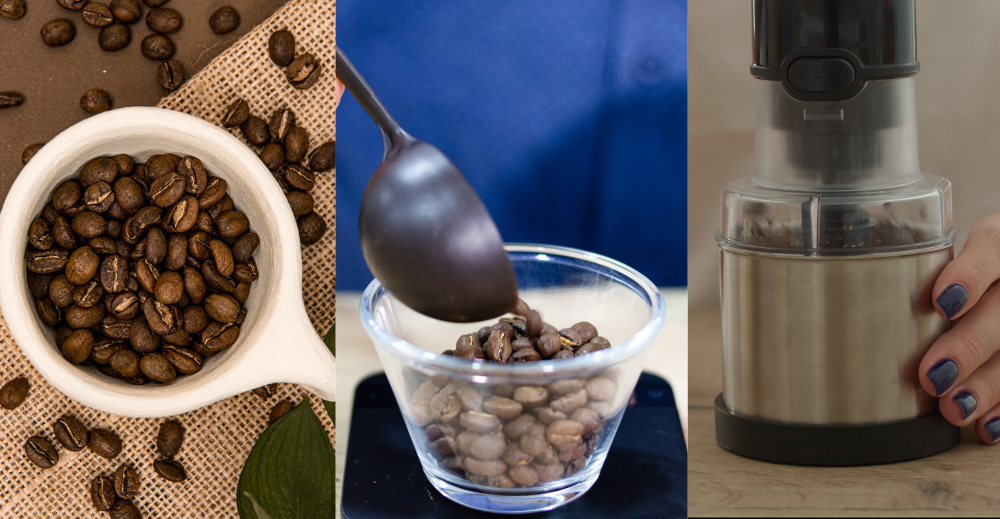
Mastering the art of grinding coffee beans for espresso at home can elevate your coffee brewing experience.
Here's a step-by-step guide to ensure you get the best flavor from your beans.
Step 1: Choosing the Right Beans
As we've discussed earlier, not all beans are created equal. Beans for making espresso usually blend Arabica and Robusta, often dark roasted. They provide a robust flavor profile and stand up to the intense espresso brewing process. Also, remember that fresher beans result in better-tasting espresso. Look for beans with a roast date, and try to use them within a month of that date.
Step 2: Measure Your Beans
Before grinding, determine how much coffee you'll need. The general rule of thumb for espresso is to use 18-20 grams of coffee for a double shot. But these measurements can vary based on personal preference and your specific espresso machine.
Step 3: Set Your Burr Grinder to the Right Setting
Your burr grinder should be set to a fine grind for espresso. Remember, the grind size can affect the extraction and taste of your espresso. It's worth experimenting with different coffee grinds and settings to find the one that produces the best flavor for your taste.
Step 4: Grind Your Beans
Pour your measured coffee beans into the grinder's hopper, adjust the grind setting, and start the coffee grinder. It's best to grind your coffee before brewing it to ensure maximum freshness.
Step 5: Check the Grind Consistency
After grinding, take a moment to check the consistency of the coffee grind. It should be fine but not powdery. The coffee grounds should feel slightly gritty between your fingers. If you find a lot of variation in the size of the coffee particles, your grinder might need some maintenance or replacement.
Step 6: Brew Your Espresso
Now it's time to put your freshly ground coffee to the test. Brew a shot of espresso following the instructions for your specific machine. Pay attention to the taste. If the espresso is too bitter, try a slightly coarser grind. Try a slightly finer espresso grind coffee if it's sour or under-extracted.
Step 7: Adjust and Fine-Tune
Brewing espresso is an art. It requires a bit of trial and error to find the perfect balance. Until you find the ideal grind size for your preferences, don't be afraid to experiment and make little changes.
Mastering the Art of Grinding Coffee Beans for Espresso

Embracing the journey of grinding your own coffee beans for espresso at home can be a deeply satisfying experience.
Investing in a quality burr grinder over blade grinders means you're already one step ahead in achieving that perfect grind. Don't be afraid to experiment with various beans and grind settings to find your unique preference since espresso is as much about the trip as it is about the destination.
Start grinding your own coffee beans, and you'll never look back. Share your espresso brewing experiences with us in the comments below, or tag us on social media. We can't wait to hear about your home brewing adventures!





R Brian
diciembre 09, 2023
Thanks for the info. Good help